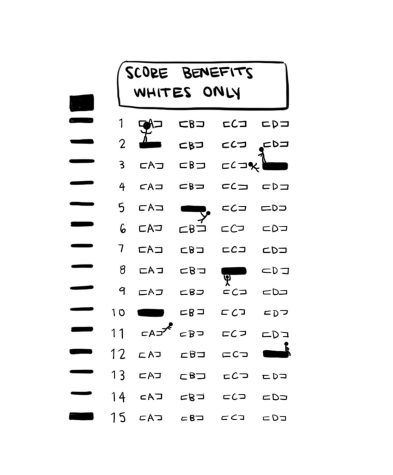The racist origins of the SAT
June 6, 2022
More than half of the nation’s universities are now standardized test-optional, according to the National Center for Fair and Open Testing. The purpose of the Scholastic Assessment Test (SAT) and the American College Test (ACT) became frequently questioned at the beginning of the COVID-19 pandemic, due to health safety issues regarding accessibility and administration. However, despite easy access to in-person testing returning, universities continue to dismiss testing from admission requirements, an action that has prompted significant controversy. Critics argue the tests provide additional evidence of academic success for those who lack proof in their transcripts. Yet, this perspective often excludes the horrific history of standardized tests. The requirement of standardized testing, especially when applied to the college admissions process, should be completely eliminated due to its historically marginalizing effects on racial minorities.
While both the SAT and the ACT have similar trends of negatively impacting racial minorities, the SAT’s history is especially jarring. The SAT was first created in the early 1900s by Carl Brigham, an American eugenist and psychologist, when the U.S. was flooded with immigrants and internal migration increased. This demographic change resulted in many white Anglo-Saxon Protestants, like Brigham, feeling threatened by the presence of new races in the American gene pool. Brigham described his eugenist ideas in his book A Study of American Intelligence, in which he claimed: “African-Americans were on the low end of the racial, ethnic, and/or cultural spectrum.” The SAT was designed to identify people of color who would “lessen” American intelligence using test results, initially for the U.S. Army during World War I, and then for university admissions.
In addition to the discriminatory motivations for the creation of the SAT, each question was masterfully manipulated to benefit

white test-takers. Jay Rosner, a national admissions test expert, examined how Brigham narrowed the questions, selecting the ones that white students did better on. In Rosner’s report, he explains that questions correctly answered by Black students more than white students were discarded during the test’s creation, while questions that white students did better on were kept. Essentially, Brigham’s test affirms knowledge typically held by white people and discourages people of color from succeeding.
Since the SAT’s creation, the College Board has attempted to combat prejudice in its standardized tests, such as the new “adversity index,” which places SAT scores in the context of students’ socioeconomic status for colleges receiving scores. Yet, disparities between scores are still, and possibly more, prevalent. The gap between the scores of Black students and white students is sixteen points greater now than it was in 1992.
Additionally, the SAT and ACT perpetuate pre-existing racial disparities in the American education system. According to the National Center for Fair and Open Testing, students of color, on average, score lower on all standardized tests beyond just the SAT and ACT. These capable students are then commonly denied merit scholarships, contributing to the large college enrollment gap in the United States. Testing also encourages the use of costly tutors and test-prep programs, a tool exclusively accessible to the wealthy, and most commonly, the white. The CEO and founder of the online SAT and ACT test-prep program Green Test Prep, Anthony-James Green wrote that he made $1,000 an hour by tutoring a wealthy child in an article for Vox. The 2019 Varsity Blues Scandal, where wealthy parents bribed college admissions officers to accept their children, exemplifies the intersection of wealth and racial disparities in college admissions, as all but one child involved in the scandal were white.
However, despite their history, it is important to acknowledge that standardized tests do offer some benefits. Those who disagree with going test-optional or test-blind point to the fact that high test scores can make up for those who have a poor grade point average. Sean-Michael Pigeon, a contributor at USA Today and a college graduate who relied on his test scores to get into college, claims that standardized tests actually offer additional support to poor students. Pigeon argues that the issue lies within educational resources at high schools that result in worse test scores. While Pigeon is not wrong, greater resources would not reverse the inherent bias that is buried in test questions. Additionally, eliminating standardized tests is not an action that serves all, such as those with limited resources that need to prove themselves to colleges. However, neither tests nor grades accurately demonstrate intelligence to schools due to additional factors. In order to truly combat disadvantages in the admissions process, additional actions must be taken, such as financial support for disadvantaged schools and families. These acts are not mutually exclusive.
Education is one of the most necessary institutions in the nation. Despite this, it often excludes or discriminates against over half of the population. And, unfortunately, a university education is still commonly deemed necessary for a successful career in the U.S. While this supposed prerequisite for an accomplished adult life is outdated, education should be accessible to everyone, and removing the requirement of standardized testing in the college admissions process is the first step to take.
Standardized testing is not only a poor representation of intelligence, but it is a creation of a philosophy that blatantly considers people of color intellectually inept. To continue requiring the SAT and ACT is to continue repressing people of color in America.























